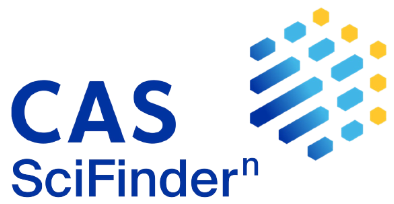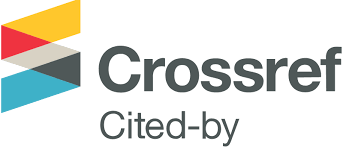Synthesis and the antimicrobial activity of 2-(1-acyl-3-piperidinyl)-1h-benzimidzoles de-rivatives
DOI:
https://doi.org/10.24959/ophcj.13.755Keywords:
benzimidazole, piperidine, antimicrobial agentsAbstract
An effective and simple method for liquid-phase combinatorial synthesis of structural analogues of compounds with the mechanism of action being similar to aminoglycoside antibiotics – 2-(1-acyl-3-piperidinyl)-1H-benzimidazoles
based on acylation of the starting 2-(3-piperidinyl)-1H-benzimidazole with aromatic carboxylic acids imidazolides has been developed. The starting 2-(3-piperidinyl)-1H-benzimidazole has been obtained by interaction
of o-phenylenediamine with nipecotic acid heating in the polyphosphoric acid medium. The application of polyphosphoric acid in this case allows keeping high temperature of the reaction medium without any other additional solvent because it well dissolves both of the components. The structure of the compounds obtained has been confirmed by 1H NMR and IR-spectroscopic methods. Unlike the starting 2-(3-piperidinyl)-1H-benzimidazole the products of its acylation contain additional signals in the region of aromatic proton resonance, produced by aromatic protons of acyl radicals. The signal of imidazole NH, which is not observed for the starting amine because of proton exchange is cleanly identified as the broad singlet at 12.14-12.30 ppm. IR-spectra of 2-(1-acyl- 3-piperidinyl)-1H-benzimidazoles are characterized by the n N–H stretching bands in the region of 3526-3417 cm-1, and the bands of n C–H vibrations (3199-2766 cm-1). An intensive band of n C=O vibrations is observed at 1672-1601 cm-1. The study of the antimicrobial activity for the compounds obtained performed by the serial dilution method has proven that the most bactericidal properties against Staphylococcus aureus strains are shown by the compounds with hydrophobic electron-donating substituents (Me-, F-) in the benzoyl fragment (MBC = 37.5 μg/ml); while the compound with the methoxy-group in meta-position of the benzoyl moiety has appeared to be active against the strain of Escherichia coli, however, it inhibits the growth of this microorganism at higher concentrations (MBC = 75 μg/ml).
Downloads
References
- Brown D.J., Jones R.L., Angyal A.M., Gtigg G.W. // J. Chem. Soc., Perkin 1. – 1972. – P. 1819-1825.
- Mashkovskii M.D. Lekarstvennye sredstva (Drugs). 15th ed. – Moscow: Novaya Volna, 2006. – P. 389.
- Maquoi E., Sounni N.E., Devy L. et al. // Clin. Cancer Res. – 2004. – Vol. 10. – P. 4038.
- Coast S.J., Dyatkin A.B., He W. et al. // Chem. Abstr. – 2006. – Vol. 145. – №397 552 k.
- Cope C., Kovacic P., Burg M. // J. Am. Chem. Soc. – 1949. – Vol. 71 (11). – P. 3658-3662.
- Дайсон Г., Мей П. Химия синтетических лекарственных веществ. – М.: Мир, 1964. – С. 629.
- Kotha S., Deb A.C., Kumar R.V. // Bioorg. Med. Chem. Lett. – 2005. – Vol. 15. – P. 1039-1043.
- Kotha S., Deb A.C. // Ind. J. Chem. – 2008. – Vol. 47 B. – P. 1120-1134.
- Miyazaki M., Handa Y., Suzuki Y., Sato J. // Res. Exp. Med. – 1987. – Vol. 187 (2). – P. 105-117.
- Pat. US 3134779 (1964) // https://www.google.ru/patents.
- Shults E.E., Andreev G.N., Shakirov M.M. // Rus. J. Org. Chem. – 2009. – Vol. 45, №1. – P. 87-101.
- Поройков В.В., Филимонов Д.А. // Рос. хим. журн. – 2006. – №2. – С. 66-75.
- Пархоменко П.И., Дульнев П.Г., Безменова Т.Э. // Укр. хим. журн. – 1975. – Т. 41, вып. 1. – С. 67-68.
- Пархоменко П.І., Безменова Т.Е. // Доп. АН. УРСР. Сер. Б. – 1970. – №5. – С. 429-431.
- Головатюк В.М., Безуглий Ю.В., Кашковський В.І. // Науково-теорет. журн. – 2011. – №12. – С. 118-124.
Downloads
Published
How to Cite
Issue
Section
License
Copyright (c) 2013 National University of Pharmacy

This work is licensed under a Creative Commons Attribution 4.0 International License.
Authors publishing their works in the Journal of Organic and Pharmaceutical Chemistry agree with the following terms:
1. Authors retain copyright and grant the journal the right of the first publication of the work under Creative Commons Attribution License allowing everyone to distribute and re-use the published material if proper citation of the original publication is given.
2. Authors are able to enter into separate, additional contractual arrangements for the non-exclusive distribution of the journal’s published version of the work (e.g., post it to an institutional repository or publish it in a book) providing proper citation of the original publication.
3. Authors are permitted and encouraged to post their work online (e.g. in institutional repositories or on authors’ personal websites) prior to and during the submission process, as it can lead to productive exchanges, as well as earlier and greater citation of published work (see The Effect of Open Access).














